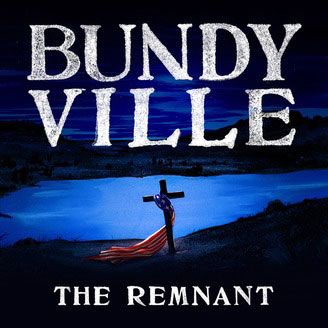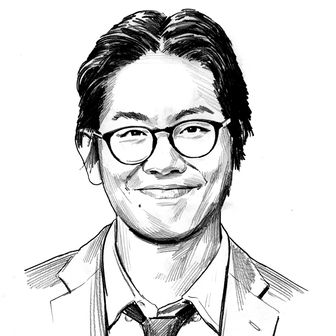
It can be terribly difficult to figure out what’s really happening in any given place in the world, but it feels triply so when it comes to a country as geographically expansive as the United States. So much so, that if the roots of societal calamity were to actually manifest themselves, we probably wouldn’t be able to see it clearly.
Case in point: Did you know there was a bombing in Panaca, a rural town in Nevada, in late 2016? Did you know it was, technically, a suicide bombing? And while the act only claimed the life of the bomber, Glenn Franklin Jones, did you know that he was inspired by a martyr figure who was killed as part of an armed anti-government extremist group that briefly took over a wildlife refuge in Oregon earlier that year? And did you know that martyr figure, Robert LaVoy Finicum, has increasingly become an energizing symbol for far-right extremists with ambitions to violently dismantle the government and, in some cases, forge a new fundamentalist society in its place?
The Panaca bombing sets the scene for the second season of Bundyville, the stellar podcast examining American extremism by the journalist Leah Sottile in partnership with Longreads and Oregon Public Broadcasting, which proceeds to explore a sprawling web of individuals, movements, and ideas associated with a growing undercurrent of political extremism that’s become more prominent in American political culture today. The first season, which wrapped last May, dug into the ideological context surrounding the armed Bundy militia that briefly occupied the Malheur National Wildlife Refuge in January 2016. This sophomore effort, called Bundyville: The Remnant (which is also available as a series of written features), extends Sottile’s reporting by exploring the influence of Finicum’s martyrdom over what’s broadly called the patriot movement, a coalition of anti-government, religious extremist, and militarized groups whose ideologies largely revolve around far-right conspiracy theories. The Remnant is vivid and affecting, offering listeners a rabbit hole down what previously feels like blank spots on the American map. It’s also well worth your time.
Speaking with Vulture from Portland, Oregon, Sottile, and Bundyville editor Ryan Haas discussed the thinking behind pursuing a second season, American extremism and the West, and what comes next.
What inspired your decision to make a second season?
Leah Sottile: We didn’t actually have plans to do more after the first season ended last year. There were loose ends, though. The one string we hadn’t really tugged on hard enough was LaVoy Finicum, and what it meant that he became a martyr for the patriot movement. I also felt that the story of who LaVoy was before he was killed hasn’t really been told.
Ryan Haas: Yeah, Leah and I started seriously considering a follow-up around the end of 2018. Another thing that made us think there was more story to tell was the fact there had been several very violent acts across the country that were linked to extremists, and in a lot of cases, it seemed like those acts shared some of the same ideas that we see all the time in the patriot movement.
And then we heard there was this rally being held for LaVoy in Salem, Oregon, in January. So we drove down there — it’s only an hour from Portland, which meant it wasn’t a big-time commitment — and after that meeting we felt like, yeah, there was something here.
Sottile: That meeting in Salem, which we covered in the third episode, felt to us like an extension of the Bundy trial we were following in the first season. A lot of the same people who were at that trial had showed up to talk about LaVoy, and to get excited about him.
The thing that really solidified the sense that LaVoy was being seen as a growing martyr figure was when I got the audio of Jeanette Finicum, his wife, talking to people at Marble Country, that separatist religious community [covered in the fourth episode], and realizing that it wasn’t just a message being heard in rooms populated by the usual Bundy supporters. It was a message that’s literally being taken on the road to big rooms full of people across America; in many cases, people who had a history of hating the government.
So I’m struck by the way the season, directly and indirectly, illustrates stark parallels between this form of anti-government American extremism and the kinds of terrorism many Americans think about when they think about the war on terror. The evocation of martyrs, the use of suicide bombing, even the whole element of separatist religious communities. To what extent did that parallel drive your approach to the season?
Sottile: Definitely. We had touched on that idea a little bit at the end of the first season, when we talked about how the Bundys recruited people to the movement by saying that their message was from the One True God, and that everyone else were apostates that had to be dealt with. So we had that in mind, absolutely, and it really bothered us to come to that realization at the end of the last season. But then we found Marble, and we saw the history that had always been in that region of the country. It was terrifying, and sobering, especially now that we see the president using and repeating talking points that were once shouted by the Aryan Nation.
Haas: At the end of the day, extremism is extremism, and it’s easy for people to see extremism in populations that don’t look or think like them. It was really important for us to explore: What does extremism actually look like in America? And when you look at the numbers, it looks like people who are in the patriot movement.
Sottile: That was one thing we wanted to hammer home: People need to recognize that these ideas are very likely in their own communities. It’s their problem to solve, not someone else’s or some political party’s.
Why do you think these news stories about this form of American extremism — particularly from the Mountain West and Pacific Northwest — don’t typically bubble up as national stories?
Sottile: Oh, man, I could surmise lots of reasons. Look, as somebody who freelances from the West, one of the earliest rejections of the story I was trying to write that became Bundyville was like, “Let us know the next time there’s a standoff,” or “Let us know the next time there’s a sexy story to tell.” (At least, that’s how I hear it.) There simply isn’t a ton of resources being allocated to covering stuff like ideology, or small-town bombings, or things like that. That’s the thing to focus on when people scratch their heads about solving this problem: You have to pay attention beyond what’s happening in the big cities.
Hass: It’s also about who’s perpetrating the violence, you know? I do believe that if Glenn Jones was black or brown, the story would have been all over.
Why do you think the American West is so overlooked?
Sottile: That’s kind of a media question, right? Like, how do you allocate resources to places where there aren’t that many people? I mean, the West has always had an allure for a lot of writers. (Though, I’ve been getting really frustrated lately because there’s been a bunch of books out recently, and I’m a little sick of white men talking about the West, especially guys who aren’t actually from the West.)
There’s a kind of singular narrative when it comes to Western stories, and that singular narrative was at play when people thought the Bundys and their was all about cowboys. It comes from a lack of understanding of who actually lives in the West, and what happens out here.
Well, the distinct irony here being: It’s that very lack of population density that makes the West appealing for the extremist groups that you’ve been covering. They want to go places where nobody’s looking.
Sottile: Absolutely. And many of the people who are looking … well, they agree with them, like some reporters who work at certain small-town papers. I’m not going to name any names, but often times they’ll push an anti-government agendas in their writing and stuff.
Maybe it’s too early to ask this, but what comes next for you guys?
Sottile: I don’t know. We don’t really have a hanging thread the way we did the last time, with LaVoy. One thing that is on my mind, though, is that the 2020 elections are coming up, and a lot of these groups that we’ve talked to may … do things in light of these elections. That may be worth covering.
Hass: 2020 could have some potential, because of, you know, Donald Trump being the anti-government government official. If a story arrives, then yes, we’ll continue with this.





